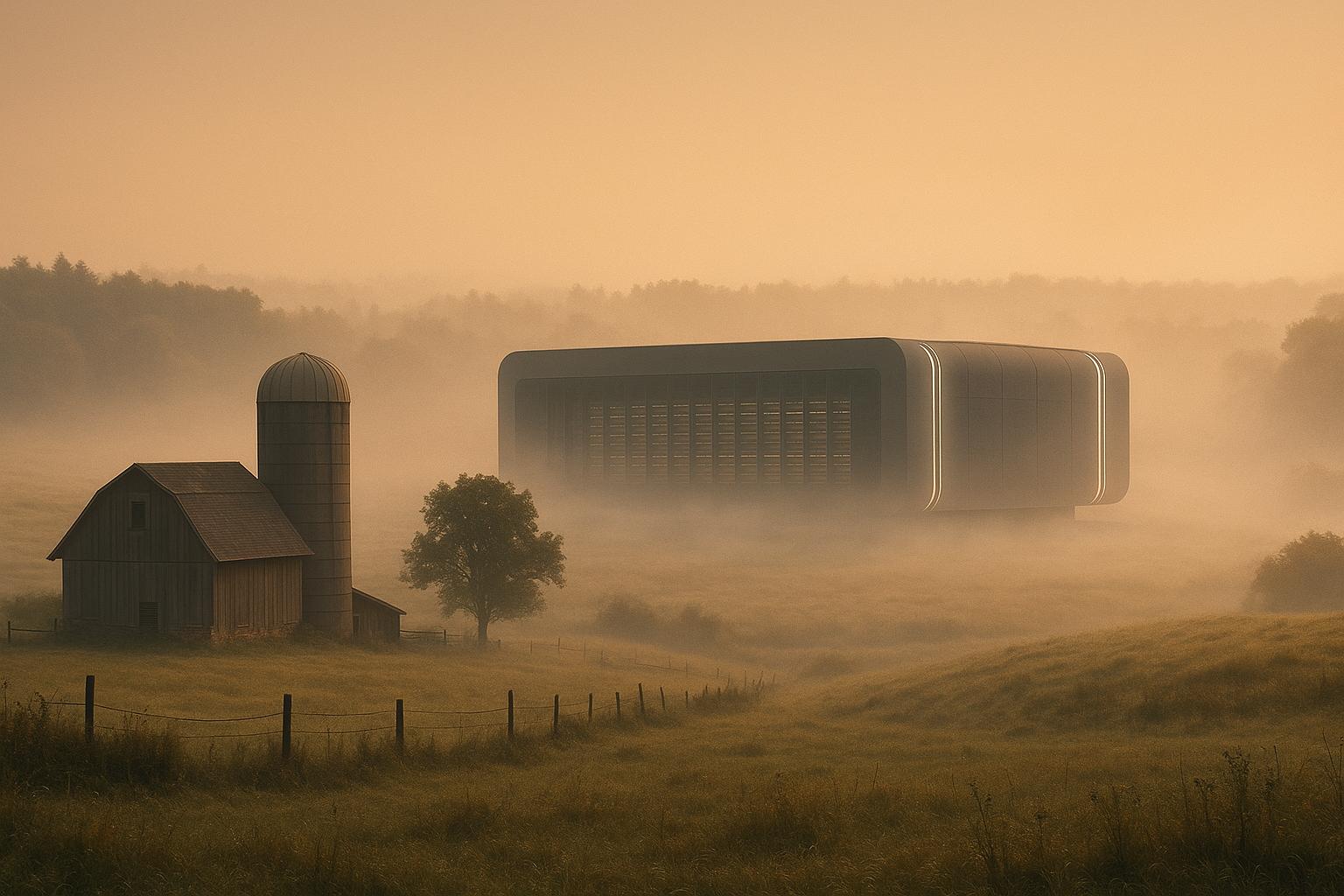Microsoft has announced the near completion of Fairwater, a monumental AI datacenter in Mount Pleasant, Wisconsin, which it describes as the world’s most powerful artificial intelligence facility. The announcement, made by CEO Satya Nadella in September 2025, underlines the significance of this 315-acre site housing hundreds of thousands of NVIDIA GB200 GPUs. The datacenter’s performance reportedly surpasses that of today's fastest supercomputers by a factor of ten. Serving as the cornerstone of Microsoft's AI infrastructure expansion, Fairwater is designed to support advanced AI training and inference at unprecedented scales, reflecting the company's aggressive $80 billion investment plan for AI data centers worldwide during 2025.
Fairwater comprises three vast buildings spanning 1.2 million square feet and is equipped with intensive technical infrastructure, including over 46 miles of deep foundations, 26.5 million pounds of structural steel, and extensive fiber optic networks—enough to circle the Earth 4.5 times. The facility's design integrates hundreds of thousands of NVIDIA GPUs into a seamless AI supercomputer cluster, utilizing flat networking topologies such as NVLink, InfiniBand, and Ethernet fabrics delivering up to 800 Gbps. This structure ensures unimpeded, high-bandwidth communication among GPUs, supported by innovative two-story rack configurations that reduce latency through vertical and horizontal networking among compute units.
In line with sustainability, Fairwater employs cutting-edge closed-loop liquid cooling technology that minimizes water use, requiring virtually no operational water post-construction. Cooling advancements include the world's second-largest water-cooled chiller plant and a system that balances traditional air cooling for a fraction of the servers. Microsoft has emphasized environmental responsibility by matching fossil fuel electricity consumption with equivalent carbon-free energy contributions, including a 250-megawatt solar project in Portage County. The facility also reflects Microsoft's commitment to local communities by pre-paying for electrical infrastructure, thereby averting increased energy costs for residents.
The company's investment in Wisconsin marks just the beginning of a broader global expansion. Microsoft has committed over $7 billion to the state, including plans for a second similar-sized AI data center, scheduled to augment the workforce to nearly 800 employees. This expansion replaces what was once slated to be a Foxconn factory site in Racine County. Simultaneously, Microsoft has announced significant AI infrastructure projects internationally, such as a $6.2 billion datacenter in Narvik, Norway, powered entirely by renewable hydropower, and a $30 billion four-year AI investment in the United Kingdom to build the nation's largest supercomputer cluster in partnership with Nscale. These initiatives aim to serve high-profile customers spanning finance, healthcare, telecommunications, and public services.
Microsoft’s colossal spending on AI infrastructure reflects the tech industry's escalating demand for AI capabilities, driven by partnerships like that with OpenAI and the burgeoning popularity of generative AI tools. The company’s $80 billion outlay for 2025 is poised to expand further through finance leases exceeding $108 billion for future datacenter construction globally through 2030. These investments also respond to competitive pressures, notably from Meta Platforms, which plans AI infrastructure spending estimated at $64 to $72 billion in 2025, including massive projects such as the Prometheus and Hyperion clusters consuming considerable power. Both corporations are forging collaborations with energy providers to secure sustainable power sources, including nuclear energy agreements.
Fairwater’s design and operational philosophy illustrate a new paradigm for AI datacenters: integrated, large-scale systems optimised for frontier AI model training rather than traditional cloud computing workloads. The facility supports Microsoft’s Azure OpenAI Service, Microsoft Copilot, and AI workloads across a multitude of industries, emphasizing the critical role of massive compute, high-speed networking, and extensive storage capabilities spanning five football fields. Innovations such as BlobFuse2 technology enable high-throughput, low-latency data access essential for GPU-intensive AI training.
Beyond technical and environmental achievements, Microsoft has cultivated local economic impact through workforce training initiatives, including Wisconsin’s first Datacenter Academy and AI Co-Innovation Labs partnered with local educational and economic bodies. The company also expanded rural broadband access and contributed to ecological restoration projects in the region, underscoring a commitment to both technological leadership and community support.
While these developments underscore Microsoft’s leadership in AI infrastructure, they also highlight the broader tensions between rapid AI advancement and environmental sustainability. Comparable to Meta’s efforts, Microsoft’s strategy involving closed-loop cooling and renewable energy demonstrates one path toward mitigating the environmental footprint of AI datacenters. However, as AI models and workloads proliferate, the balance between infrastructural growth and sustainable resource use will remain a critical challenge for the industry.
In summary, the Fairwater datacenter exemplifies Microsoft's ambitious vision of exponentially scaled AI infrastructure, backed by unparalleled capital investment and innovative technical solutions. Its success and continued expansion will likely shape the trajectory of AI capabilities globally, underpinning future breakthroughs in multiple fields while simultaneously setting new benchmarks for sustainable data centre practices and economic development in host communities.
📌 Reference Map:
- Paragraph 1 – [1], [3], [5], [6]
- Paragraph 2 – [1], [3]
- Paragraph 3 – [1], [3], [2]
- Paragraph 4 – [1], [2], [3]
- Paragraph 5 – [1], [4], [5], [6], [7]
- Paragraph 6 – [1], [7]
- Paragraph 7 – [1], [2]
- Paragraph 8 – [1], [2], [3]
- Paragraph 9 – [1], [2], [3]
Source: Noah Wire Services
